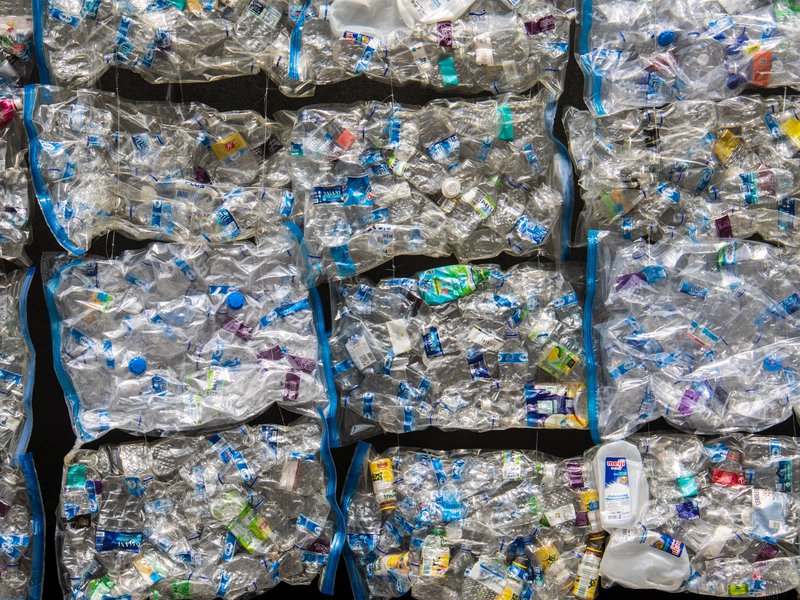Innovative Packaging: Plastic vs. The Other Guys

What is Plastic? A Brief History
Plastic originally meant “pliable or easily shaped.” It wasn’t until recently that plastic got its name as a category of polymers. Polymers are long chains of molecules used to make different materials. Over the last 150 years, people have been successful in finding ways to make synthetic polymers such as plastic.
In 1869, John Wesley Hyatt created the first synthetic polymer. Materials like ivory, linen, and tortoiseshell were becoming harder to come by and Hyatt was determined to find a solution. Hyatt created a plastic that could be shaped into anything and made to look like the original materials. There is only so much wood, stone, metal, tusk, and horn to be found in nature. This discovery helped the environment in more ways than one. Giving alternative options for packaging and materials left certain animals out of harm's way.
As the industry has evolved, synthetic plastics that use fewer materials from nature became the norm. Plastic became extremely popular due to its affordable nature and ample supply of material in order to produce.
Why is Packaging Important?
Packaging is essential to our society. It provides visuals, protections, and barriers that are essential in retail locations and grocery stores. It is integral to marketing and brand image as well as keeping products clean, fresh, and protected. Some people judge a product on its packaging which means it needs to be eye-catching. If someone were to see a package that was familiar, attractive, or promised something, they would probably be more likely to purchase it.
What’s the Problem with Plastic?
Not sure why companies are being pushed to create more innovative packaging methods? Plastic debris was first found in the ocean in the 1960’s. Not only does plastic pose a threat to the environment due to improper disposal, but it also shows its own dangers to human health.
Plastic packaging is extremely wasteful and impacts all of earth’s ecosystems. Since plastic is not biodegradable, every piece ever made is still on earth. Over 9.2 billion tons of plastic have been produced and of that, 9% has been recycled properly. Plastic is a great invention and we do need it, but perhaps it’s time to start finding alternative packaging materials that are not as harmful as plastic.
Plastic vs. The Other Guys
Companies have started to discover new materials and new ways of packaging besides using plastic. Here’s the process that goes into each of these different materials, the transportation costs on the environment, and the lasting effect of some alternative packaging materials.
Plastic:
How is plastic made? The manufacturing process starts with two materials. Oils and natural gas. To get these raw materials, take a journey to earth’s crust. That’s where drilling comes in.
Transportation costs: The environmental cost to transport plastic bottles is sometimes even more than the environmental cost to produce the bottle. Plastic does, however, pack tightly and is very light-weight. So for short distances, it is not always more costly on the environment.
Where does it end up? It is sad to think how little of the plastic we use gets recycled. Other than the 9% of plastic that is recycled, the rest goes into landfill, onto our streets, or into our oceans. This plastic then sits and does not decompose for almost 700 years.
Glass:
How is glass made? Limestone, soda ash, liquified sand, recycled glass, and various additives are all used in the making of glass. Mining for limestone can destroy habitats and can ruin a landscape forever. It is, however, safe to say that the materials used for making glass are readily available in the United States.
Transportation costs: Glass bottles are really heavy. This means expensive and non-eco friendly transportation methods. This means more energy and more space. It isn’t possible to pack glass bottles as tightly as plastic or aluminum.
Where does it end up? Fortunately, glass bottles are fully recyclable. Unlike plastic which has different numbers for different kinds, glass is always recyclable. An average of 80% of recycled glass containers are made into new bottles or containers. Along with using recycled glass for new bottles, companies are reducing their carbon footprint by using recycled material.
Aluminum:
How is aluminum made? Most aluminum cans are made from bauxite, a material that is not available in the U.S. It usually comes from mines in countries such as Guinea and Australia. Mining bauxite is extremely harsh on the environment leaving lasting destruction behind. Not only does it contribute to water contamination and loss of habitat, but also mining increases erosion and contributes to the rapid deterioration of our planet.
Transportation costs: Cans are pretty lightweight. This means less gas in transport, more room for more cans, and less protective material in order to transport.
Where does it end up? Aluminum cans and bottles can be recycled repeatedly. Unfortunately though, only 45% of cans are being recycled which means more harmful drilling.
Paper:
How is paper made? Paper comes from trees, as many may know. Paper bags and containers require forests being cut down. A research study done by the Northern Ireland Assembly found that producing paper bags takes more than four times as much energy as single use plastic bags as well as using harmful chemicals in the process.
Transportation costs: Paper is heavier than plastic which means more energy and higher transportation costs.
Where does it end up? Paper bags are more likely to tear open or leak which means consumers are less likely to reuse them than other bags. Despite its low durability, one advantage of paper is that it decomposes much faster than plastic, and therefore it is less likely to add to landfills and threaten wildlife.
What are Some Solutions?
Plastic is very helpful to everyday life and is essential in many ways. This is why some companies are starting to develop new ways to create innovative and alternative packaging materials. Bioplastics, which are made from plants instead of fossil fuels have become more popular in trying to create more environmentally-friendly materials. Other companies are working on making plastics fully biodegradable. If innovators could find a way to turn plastic back into the fossil fuels that were made to make them originally, they could make strides towards more efficient recycling.
Innovative Packaging Startups

Pathwater has produced the first-ever packaged, purified, refillable aluminum water bottle. With the average person drinking 168 plastic bottles of water per year, they knew that the problem required both a change in how bottles are manufactured and a change in how people consume. Pathwater’s goal is to forge a path to end single-use plastic and decrease the amount of plastic polluting our environments. Pathwater is changing consumer behavior by offering a way to combine the convenience of great water with the sustainability of a reusable container. A hybrid between water brands and bottle brands, Pathwater bottles use modern filtration to make great tasting, purified water. Aluminum is 100% recyclable.

Apeel provides a plant-derived refrigeration solution to combat the waste of fruits and vegetables throughout almost every step of the supply chain — from packer to retailer and to consumers at home. Instead of using plastic to package their fruit, Apeel has innovated and created a way to improve shelf life while doing away with harmful plastic packaging. In 2020, the company is on track to save 20 million pieces of fruit from going to waste at retail stores.

A resealable can, can2close has created an aluminum can that can be resealed and saved for later. Their goal is to bring their solution to the market in order to improve the usage experience of cans and increase the occasions for their use. Along with partner brands, can2close will offer and innovative and desirable new experience fro consumers.

nohbo successfully formulated the world’s first single use, water soluble shampoo Drop. One simply takes a nohbo shampoo (or other personal care) Drop in their hands under shower water, and the product melts and lathers instantly. NOHBO Drops are comprised of two parts; An outer biodegradable film designed to break down fast in shower water, and a moisturizing liquid anhydrous (fancy way of saying it has little to no water) base of natural or naturally derived shampoo, conditioner, body wash OR shaving cream. Their philosophy is to create a superior line of eco-friendly personal care products that lather cleanse and nourish without compromise to quality, sustainability, or performance.
If you want to learn more about our partnership with the Alliance to End Plastic Waste and our end plastic waste initiative, please visit our website.



